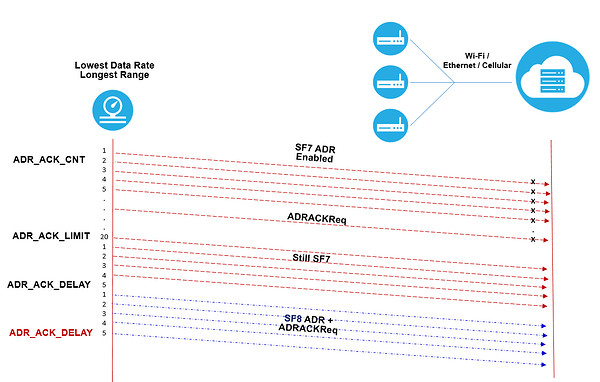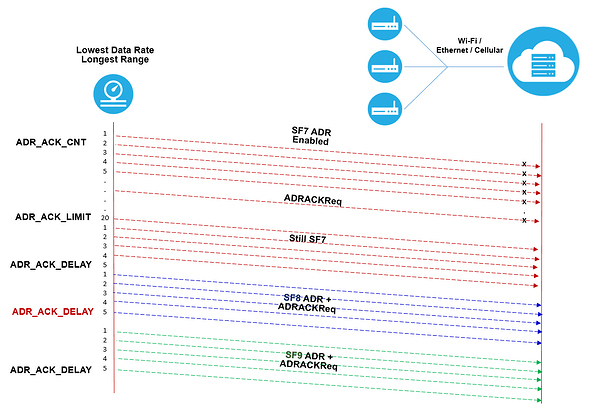As for the data rate for OTAA, Semtech writes in Joining and Rejoining:
In addition to random frequency selection, randomly selecting available DataRates (DRs) for the region that you want is also important.
Note: It is important to vary the DR. If you always choose a low DR, join requests will take much more time on air. Join requests will also have a much higher chance of interfering with other join attempts as well as with regular message traffic from other devices. Conversely, if you always use a high DR and the device trying to join the network is far away from the LoRaWAN gateway or sitting in an RF-obstructed or null region, the gateway may not receive a device’s join request. Given these realities, randomly vary the DR and frequency to defend against low signals while balancing against on-air time for join requests.
And as for ADR acknowledgements:
The same strategy is indeed explained in Semtech’s Understanding ADR:
If no answer is received from the network server by the time the acknowledgement delay period has expired, the data rate will automatically be reduced by one step, as illustrated in Figure 8.
Figure 8After this one-step data rate reduction, the end device continues sending messages to the server (at this new, lower, data rate) requesting an ADR acknowledgement. Once an acknowledgement is received, the end device uses the new, server-determined, data rate until it receives an instruction to change it again via the normal ADR mechanism. However, if no answer is forthcoming, the end device continues to ratchet down the data rate, step by step, until it gets a response or, assuming the device and network are in Europe, until it reaches SF12 (Figure 9).
Note: The highest spreading factor that can be used with LoRaWAN varies by region, for instance in the USA, the highest SF is SF10.
Figure 9
Just like in the LoRaWAN specifications: not a word about the transmission power.

